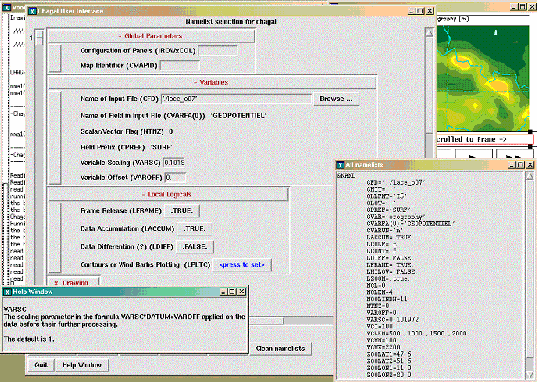
Note: all ALATNET related R & D, representing the majority of the effort, is reported in ALATNET part of the Newsletter. Here we sum-up topics which are not referred as ALATNET ones for Prague centre.
1. Developments in physics
- Diagnostics of PBL height
Though the first version of PBL height diagnostics is already produced operationally, this product is not yet really ripe and it still needs further refinements. As implemented in the cycle AL12_op6, it quite often happens that the resulting PBL height is either too small (below 1 meter or even very close to zero) or too high (even above 8km). The behaviour of the current scheme was extensively tested in ALADIN/LACE. The problems occur especially over hills and valleys and above the sea surface (too low values of PBL height) or under specific conditions like deep temperature inversions, very strong wind (too high values of PBL height). The diurnal evolution of PBL height is quite visible. The diagnostic scheme was modified and tested in order to avoid too small PBL heights. The modification improves the results, but it does not solve yet other weaknesses. There is a detailed report (written by Martina Tudor) available in Prague on request. The report describes well the current scheme and tests of it made with ALADIN/LACE, as well as the proposed modification.
More details can be asked to: Martina Tudor and Jean-François Geleyn.
- Diagnostic of winter PBL moisture
It was noticed by the forecasters that the model over-dries the PBL at the lee side of the mountains in winter. Therefore the diagnostic of this feature was done using ALADIN/LACE on some pre-selected typical cases from February 2001. The over-drying was confirmed, however the reason is not yet understood. The bias in relative humidity is quite important (reaching up to 35% at some SYNOP stations) in the region of North-East Austria. On the other hand the temperature and wind forecast were quite good. One plausible explanation was checked: whether there is not a kind of Tanguay-Ritchie effect concerning the physical forcing (in analogy with the orographic forcing). Therefore the experiment was rerun in the Eulerian mode but without a real change of the humidity forecast. Another test consisted in suppressing the horizontal diffusion of humidity to avoid fictitious vertical diffusion of humidity along the mountain slopes (there actually was a layer of quite a dry air above as confirmed by Vienna sounding) but again without any significant effect on the humidity forecast. The preliminary conclusion is that one has to look closer to the PBL parameterization in order to understand more the mechanism of the dry air intrusion into the surface layer.
More details can be asked to: Harald Seidl, Thomas Haiden, Filip Vana.
2. Developments in the verification
- Verification of precipitation
The tool VERAL is going to be extended in order to compute the scores of precipitation. This has been a long time goal of RC LACE. There were many technical problems, related especially to the correct representation of the precipitation amounts in the observation CMA-format files, both regarding the quantity compared to the model forecasts and the interval of measurements. The updated VERAL should be at disposal in a near future.
RC LACE Management Group discussed the verification strategy in general. Thanks to the stabilized archive in Prague, it becomes possible to compute the ALADIN/LACE scores systematically and to work out the basic scores in a continuous manner. A list of scores to be produced was discussed and established.
More details can be asked to: Dijana Klaric, Zuzana Huthova.
3. Technical developments
- Configuration E923
The configuration for computing the climatological boundary constants was finally ported to the NEC SX4 platform. Most of the problems were linked to the different representation length of INTEGER numbers in the datasets and on the machine. The E923 configuration was also ported to the LINUX server voodoo. This configuration is important in order to prepare the tests of ALADIN on a 1 km horizontal mesh having a correct representation of the orography.
More details can be asked to: Jure Jerman

- CHAGAL User Interface
The development of the Tk-based user interface to CHAGAL namelist has progressed. Its author, Tomas Kalibera, ported it to LINUX platform and made its extensive tests. The tool is designed to support a quick creation of new CHAGAL namelists and their modification as well as to launch CHAGAL program for easy visualization of the horizontal fields in ALADIN files.
Some minor changes and improvements have been made also in the CHAGAL itself to meet needs of the local ALADIN development team.
More details: Tomas Kalibera, Martin Janousek
 |
Home |